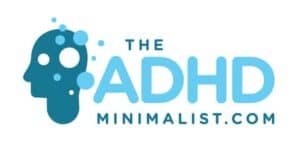
During a particularly difficult year with my ADHD children my son (Lage) who has ADHD predominantly hyper had panic attacks, became antisocial, and even talked about hurting himself.
He was eleven at the time.
I dragged him to several different doctors who said these were common side effects of ADHD. Instead of offering us the help we actually needed they offered more medicine.
We tried several new medicines, but some of the pharmaceutical drugs made things worse. Out of desperation, I began reading all the books on ADHD I could get my hands on. What I found was that my son didn’t need extra medicine. He needed Limbic Bonding with both my husband and myself.
Annie Eklöv
Why does Limbic bonding improve the health and stability of ADHD children?
Children with ADHD are often like porcupines. You try to connect with them, and you get your finger pricked. In short Limbic bonding bypasses some of the normal social interactions and cuts to the chase. It makes your child feel loved, connected to, and desired by the most important person in their world YOU!
‘’Limbic bonding is actually taking your child in and making him feel delicious. Getting that oxytocin flowing… these moments of connection are medicinal!’’ Jennifer Kolari

You are the Expert on your Child!
When Lage was going through this difficult Phase which was disheartening and long-lasting. The one thing I consistently noticed was that my husband and I were extremely important to Lage. He was detaching from peers and clinging to us with desperate neediness.
Some days he refused to be away from us at all. He would have fits of anger if my husband and I needed to be away from him simultaneously.
He even went on strike and stayed home from school a whole week because my husband and I had planned to go on a romantic weekend getaway the following Friday.
We were not going far away and we left him in the care of his grandparents and his aunt who love him very much, but he made it almost impossible for us to leave!
At this point, his irrational behavior had been sabotaging our family for three months. He would have panic attacks nearly every day and they would last for one to three hours.
The rest of the day we felt like we were walking on eggshells tiptoeing around him. It was like he was a ticking bomb that could explode at any moment.
As these panic attacks continued without respite I felt increasingly guilty about how little time I was able to spend with my girls. Many times my eight-year-old daughter was forced into babysitting her three-year-old sister. Fortunately, she didn’t seem to mind and she did a good job.
I realized there was something wrong in our relationship with our son if he felt he needed to cling to us so desperately.
Annie Eklöv
He must be worried that he could sabotage our relationship irreparably, I thought.
I wondered if he knew that we would always love him and that we would never sever our relationship with him?
The problem was that, I didn’t know how to get this point across.
He wouldn’t listen to anything we said.
Even though we spent extreme amounts of time with him when he was panicking or needy none of this seemed to count.
Deep down he seemed to feel he needed to cling to us for all he was worth!
I started searching for an answer to his clingy needy behavior.
The answer was to spend more time with him at our request, when he was not begging for our attention. During these times we needed to be intentional about Limbic bonding.
This was hard! I did not feel like spending more time with my son!
I was worried about the minute amount of time I could spend with my girls. I didn’t want them to feel neglected. This solution to our problem seemed completely counterintuitive!

Attachment circuitry
Western culture strains the nuclear family.
Gordon Neufeld reminds us that the phenomenon of the adolescent is relatively new and it has negative consequences on our society.
A couple of hundred years ago you were either a child or you were considered an adult. Young adults were often apprenticed and working closely with a trusted tradesman or family member.
In many African cultures, you are either a child or you are learning the ways of the adults around you with the intention of passing a test to be considered a man or woman in the village.
In the culture we live in often teenagers do not want to impress adults. They want to impress each other and this leads to dangerous behaviors.
Their attachment circuitry is off. Teenagers are detaching from their parents and attaching to other teenagers.
The problem with this is that parents were designed to help regulate their child’s and teenager’s brain.
The brain is not fully developed until around the age of 25! We were meant to live closely with our children and to function as a check and balance system helping their brains grow and develop until they can function as fully developed adults.
Annie Eklöv
If kids don’t get reward chemicals from us they will try to make up for the deficit by searching for reward chemicals in shocking and dangerous behaviors.

Think of your child as having several tanks like the gas tank on a car
Gary Chapman uses the ‘Love Tank’ analogy in his book The five Love Languages (He has a second book about love languages for kids check it out at Our Favorite Resources page).
I believe kids have more than one tank that needs filling. If you don’t fill their reward chemical tank then they will automatically try filling it in other ways.
They can get reward chemicals from video games, drugs, drinking, extreme sports, dangerous sexual behaviors, from attaching to peers or a boyfriend/girlfriend relationship just to name a few.
‘’If the attachment circuitry is off and if the reward chemicals aren’t coming in they are going to find it somewhere else. YOU need to be the reward chemicals for your child. You need to be delicious and warm and comfortable to talk to. You don’t have to be perfect, and it doesn’t mean that you don’t get mad, it doesn’t mean you don’t correct, and you don’t consequence.’’ Jennifer Kolari
Kids need to regulate off of us. This is why actively bonding with your child is so important. We need to help their brains learn how to regulate. When our kids are attached to us then we can do this job properly.
Hopefully, your teenager has chosen good friends, but sometimes even the best of kids succumb to peer pressure and bad decisions made by immature brains.
If your teenager who is firmly attached to you is out with friends who decide to vandalize a building, do drugs, or act on other unwise behavior, he will feel very uncomfortable. He will probably start thinking about how disappointed you will be if he participates, and hopefully, he will feel so secure and attached to you that he will leave his friends and call you to pick him up.
Kids who are not connected to their parents regulate off of each other. That’s why when one teenager says let’s spray paint our teacher’s house their friends say yeah, that’s a great idea!
They need adults to put the breaks on when they are unable to see the danger or the consequences of their actions.
A study about preteen and teen behavior in the USA interviewed 12118 adolescents in grades 7 through 12 in their homes.
The kids were asked questions about suicidal thoughts, self-destructive behaviors, drug usage, drug abuse, and sexual behaviors.
The type of family the child came from was taken into context as well as the personality of the child and the school they attended. They found that the parent-child bond was a major factor in preventing dangerous teenage behaviors.
‘’Parent-family connectedness and perceived school connectedness were protective against every health risk behavior measure except history of pregnancy.’’
PubMed
Resnick MD, Bearman PS, Blum RW, et al. Protecting adolescents from harm. Findings from the National Longitudinal Study on Adolescent Health. JAMA. 1997;278(10):823‐832. doi:10.1001/jama.278.10.823https://pubmed.ncbi.nlm.nih.gov/9293990/
https://www.youtube.com/watch?v=UlMkWJY5T_w

The Limbic system is tied to emotions
Children with ADHD often have trouble regulating their emotions. They can easily get caught in a negative emotional spiral. Limbic bonding is a way for parents to help their kids regulate emotions.
It is now known that the brain changes over a lifetime. Your brain makes new connections and learns new things every day and this can affect you and your ADHD child positively or negatively.
Those of us with ADHD get stuck in depression and negative thought patterns more easily than others.
If your child, like mine, is often negative, sees a problem with everything, worries, tends to blame everyone else, and recalls mostly negative memories, then their brain is caught in a negative spiral.
For example, if they worry all the time, eventually something bad will happen and they will feel justified for worrying.
Most of the time their worry is unnecessary, but when they worry over something and their worry-fears actually come true this reinforced the brain’s conclusion that it needs to worry all the time. The connections in the brain wired to worry become stronger.
On the other hand, if you actively try to change the wiring of the brain by helping your child look on the bright side this can strengthen the positive wires in the brain and make them more likely to fire together.
“Neurons that fire together wire together.” was first coined by Donald Hebb a Canadian neuropsychologist.
“The mood and thoughts of others directly affect your limbic system. How our deep limbic system functions is essential to life itself. Spend time with people who enhance the quality of your limbic system rather than those who cause it to become inflamed.’’ Dr. Daniel G. Amen wrote in his book Change your Brain Change your Life.

Practical ways to Bond with your child
Help your child think positively by recalling fun family memories. Get out his/her old baby clothes and tell your kids how cute they were as a baby.
Telling stories about when your children were babies or toddlers and reinforcing the stories with baby pictures is a great way to make contact with your kids.
When Lage was having a tough time I looked through our family photo albums once a week to find a page with a good picture of my son that I could easily tell him about.
Then I would put the book out and when my son and I happened to bump into each other near the book I would grab it and say look Lage you were so cute! This picture was taken in your great aunt’s pool, on our trip to America!
He was more responsive to my storytelling when he perceived it as spontaneous.
Touch is essential for limbic bonding. Touch your kids. Give them a pat on the back, a hug, or give them that massage they have been begging for.
Your child’s desire for a shoulder massage gives you a perfect opportunity for Limbic Bonding. Teenagers especially (I know because I have one) can resist touch, but I still get peppered with requests for massage and back scratches.
Jennifer Kolari believes that what she calls ‘’Baby Play’’ can be one of the quickest and most effective ways to begin Limbic bonding with your child.
‘’Ten to fifteen minutes a day just scoop them up and rub noses with them and rub their cheeks and tell them stories about when they were a baby and go get baby photos of them’’ Jennifer Kalori
When I was little I enjoyed wrestling with my family. My brother and I would try to take dad down. Tickling or pillow fighting can be fun family ways to start touching without it feeling awkward.
‘’Many teenagers actually love the actual physical kind of baby stuff, and they love it because it’s an oxytocin fyller upper you actually chemically feel what happens when oxytocin floods the brain.
Most kids love to hear stories about when they were little and they love this cuddling. A lot of parents say ‘I do that’ Everyone says ‘I do that already!’ Of course you do! Do it more!
If your child is having difficulties, if your child is anxious, If your child is one of these gladiators where it’s no, no, no, no, no! Do it more! They need it it’s brain food.’’ Jennifer Kolari

Limbic Bonding with your child can completely transform ADHD behaviour.
I know this works!
Limbic Bonding is not a quick fix if you have children with ADHD, Panic attacks, depression, or just what Jennifer Kolari calls a Gladiator child, but it works long term and it’s worth the effort!
My husband and I decided that he would take part of every Friday off work and take Lage out to do something that they both thought was fun.
This got them out of the house and gave the girls and me a chance to spend time together.
The reason we made the time with my husband a priority was that I was at home part-time. I met the kids at 14:00 every day when they came home from school.
My husband had significantly less time with the kids because he worked more. He took our eight-year-old daughter out by herself every other week as well.
At home, I would tell Lage stories about when he was little and show him pictures. I got out his baby blanket which he kept in his room for some months. I asked my husband to tell Lage babies stories too, but David couldn’t think of any.
I don’t know if it’s a mother thing, but I remember far more details from when our kids were babies than what my husband does.
I try to remind him or I begin telling baby stories at the supper table so he can hear. Often this jogged his memory and he actually adds some details that I forgot.
Bonding with your child will not cause all problems to disappear, but I have seen the enormous difference it has made on my three kids.
I wish limbic bonding could banish diagnoses such as ADHD, Autism, and Dyslexia. I suppose nothing short of a miracle could reverse a diagnosis, but bonding significantly reduces the anxiety that those affected by these diagnoses often feel.
Annie Eklöv
As a mother, I long to make the struggles my children experience disappear, but this would be doing them a disservice or a ‘Bear Favor’ as they say in Sweden. Struggles teach the brain that it has the capacity to overcome problems.
Never letting our kids face their own problems would be maiming them for life.
As parents, the best thing we can do is to be closely bonded to our kids so they desire to come to tell us about their struggles. Then we need to be strong enough to hear their pain and feel their pain without moving in, taking over the situation, and fixing everything for them.
Obviously, kids of different ages should be trusted to sort out different kinds of problems. As well as kids with diagnoses may need more time to learn coping skills that their classmates have already developed.
We as parents should be like a diving board for our kids to bounce ideas off of when they get stuck.
When we help them solve their own problems instead of fixing everything for them we equip our children to succeed in life.

A Side Note on Medication
Just a side note my son Lage does take a medication called Atomoxetine. Atomoxetine Actavisis what it is called by the Swedish pharmaceutical companies. Doctors tell me it is also called Strattera.
We have found this medicine to be helpful because it gives a constant boost to his system.
It does not cause him to be hyper or crash as it enters and exits his body. Many of the other medicines we tried did.
It took us three years to finally figure out what medicine worked best for Lage.
Every child is different, but if you have an inkling that your child’s meds are making things worse instead of better you can always ask if your child can try a medicine with long-term effects.
If you want to read about our experience with ADHD and medicine you can click below.
WE WENT THROUGH A NIGHTMARE, trying to find the right ADHD meds for our son.
https://theadhdminimalist.com/how-three-different-adhd-medications-affected-my-son/
I am not giving medical advice. I am not a doctor. I am merely sharing what we have experienced in hopes that it will give you a shortcut.
Sources
The books that I have drawn from to write this post are as follows:
- Dr. Daniel G. Amen’s book Change your Brain Change your Life
- Jennifer Kolari’s book Connected parenting
- Hold on to Your Kids by Gordon Neufeld Ph.D and Gabor Maté M.D.
- Dr Gabor Maté’s book Scattered Minds.
- A study about how young adolescents connectedness to their parents prevented dangerous behaviour was also helpful. Resnick MD, Bearman PS, Blum RW, et al. Protecting adolescents from harm. Findings from the National Longitudinal Study on Adolescent Health. JAMA. 1997;278(10):823‐832. doi:10.1001/jama.278.10.823
For more information and book tips check out our page Our Favorite Resources https://theadhdminimalist.com/our-favourite-resources/

Read more on life with ADHD check out my post on What To Do If Your ADHD child Is A Pack Rat!
or
Why Working as a Team, to Parent Your ADHD, Child is Crucial!
Copyright Annie Eklöv


